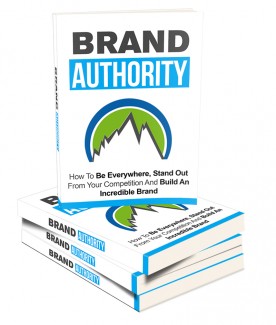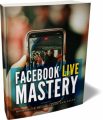 License Type: Master Resell Rights
License Type: Master Resell Rights  File Size: 458,192 KB
File Size: 458,192 KB File Type: ZIP
File Type: ZIP
 SKU: 55164
SKU: 55164  Shipping: Online Download
Shipping: Online Download
Ebook Sample Content Preview:
Using Your Logo and 'Being Everywhere'
Hopefully after doing all this you will have a logo that you're happy with. The next question though is: how do you use it?
More Materials to Create
To start with, you might want to try creating some more materials that you can use alongside your logo and that will likely come out of the logo too.
For instance, if you are going to be using any type of video marketing or if you will be vlogging on YouTube, then you may want to create a video opener. This is a short animation, often with music, that will play right at the start of your videos to once again tie them altogether. Often the animation will feature the logo in some way or another and very often it will simply be an animation of the logo either moving around or being constructing in some form.
Likewise, you may want to look into creating some headed letter paper which you can use when communicating with clients and/or some business cards with your logo on. Already you're seeing how useful and versatile a good logo it can be - and this way, every interaction you have with someone will become a chance to reinforce your brand and to help build recognition.
Website Design
One particularly big aspect of your branding that you will also need to create is your website. Your website will serve as a portal and shop window for your business, as well as an advert and representative of your business and much more. If your website doesn't inspire confidence and isn't memorable then you will miss out on countless marketing opportunities and huge growth potential.
What's more, if you are an internet marketer or blogger, it may be that your website is pretty much the entire of your business model. If you're making money from adverts on your website or through sales of digital/affiliate products, then it's crucial that your website leave a lasting impression so that customers come back to it.
In this case, simply having your logo at the top of your site is not enough. Logos and banners will typically go at the top of a website because a) that fits in with the 'F Zone' (which is the region we are most likely to look when we visit a new site) and b) experience teaches us that we should look at the top for titles and branding.
But the fact of the matter is that most people just aren't that interested in logos and banners. Most of the time we visit a website because we're interested in the content of a specific article. So as soon as we land on the site, we will scroll down to the text and we will skip past everything else. If you want people to recognize your site next time they visit then you need to differentiate your site in more ways than through the logo alone.
How do you do this then?
One answer is to use the same color scheme and design sensibilities you do in your logo throughout your entire site.
Take Virgin for instance. Virgin is a huge brand, recognizable by its red and white logo. Virgin's brand is actually particularly important too because it is the unifying feature throughout multiple different branches of business.
Now if you take a look at two of their websites (the main 'Virgin' website and the 'Virgin Active' website) you will notice that they have something in common - liberal use of the 'Virgin red'.
As well as quite a lot of white text. This way, no matter which part of the page you are on, you will be reminded that this is a virgin website and the brand will be constantly reinforced.
The same goes for your own site then: try to include call backs to your logo through your choice of color palette, through your background and even through the typeface you use. At the same time, just ensure that your website is recognizable and interesting (without being distracting) no matter which page you're on or how far you've scrolled down. If your site could very easily be any other site in your niche, then you need to think about strengthening its brand identity.
Creating a Personal Brand
Looking at the screenshot of the Virgin website you might also have noticed something else that is very distinctively 'Virgin' - a mugshot of Richard Branson.
As well as his Virgin Brand, Richard Branson has also been somewhat successful in creating a 'personal brand'. By putting his face and personality at the forefront of much of his marketing and even some of his products, Richard has created an association between himself and his business.
This is something that lends itself particularly well to online business. If you run a website or blog, then you might well use your name as a byline after writing blog posts or you might even appear in videos. Some people will even use their own name as their website name and might use themselves to promote their products. Take a look at Pat Flynn for instance - the owner of Smart Passive Income - whose banner reads 'The Smart Passive Income Blog with Pat Flynn'. Likewise, Tim Ferriss (who owns the Four Hour Workweek Blog) has effectively built his business around his own name.
If you are selling a fitness product or writing a fitness blog and you happen to be in great shape, then you can use this to your advantage in order to promote your product and to show that it works even.
Attaching yourself to your brand or creating an entirely personal brand is often a good strategy as it helps to build trust (more on that later) and puts a face behind your name. At the same time, people are 'programmed' to be very good at recognizing faces and names and as such you can instantly make yourself more memorable by letting people meet the personality behind the website/company.
Some people won't feel comfortable putting themselves forward in such a way and exposing themselves however and as such may prefer to shy away from the spotlight. Either strategy is fine, just remember that creating a personal brand is a viable option if you want to make your company even more memorable.








